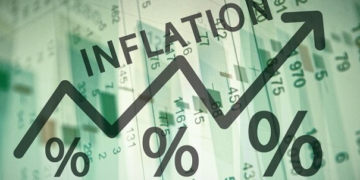On Monday, dollar’s sell-off extended into the weekly close, as risk-aversion was unable to trigger flows to the American currency.
The EUR/USD pair hit 1.2781 while GBP/USD traded as high as 1.2902. Both pair settled a few pips below their mentioned highs.
Commodity-linked currencies advanced within familiar levels against their American rival, as the poor tone of equities put a cap to their gains. Wall Street, however, managed to post some gains, with tech shares and the Nasdaq leading the way higher.
Safe-haven assets also won. The USD/JPY pair flirted with 105.00 and may continue falling, while gold soared to a record high of $1,945.60 a troy ounce, ending the day around 1,937.
Crude oil prices remained within familiar levels ahead of a clearer picture. WTI remained above $ 41.00 a barrel. Gold soared, setting at around $1,900 a troy ounce, its highest since September 2011.
Read also;
- Fitch Revises United States’ Outlook to Negative; Affirms at AAA
- U.S GDP plunge by a record 33% in second quarter of 2020
The Dow Jones Industrial Average ended 114.88 points higher, or 0.4%, at 26,584.77, while the S&P 500 added 23.78 points, or 0.7%, to finish at 3,239.41. The tech-heavy Nasdaq Composite finished with 173.09 points higher, or 1.7%, at 10,536.27.
On Tuesday, the USD got to recover some ground at the beginning of the day. Late into Monday, US Senate Republicans unveiled the new coronavirus aid package proposal that will now need Democrats’ support. Dollar’s gains however were limited and temporal.
The EUR/USD pair finished the day with modest losses around 1.1720 confined to a tight range on a daily basis. GBP/USD soared to the 1.2950 region, holding nearby at the end of the day, backed by an upward surprise in a local retail sales report.
Commodities eased from their recent highs, with gold flirting with 1,900 but settling at around $1,960 a troy ounce. Oil prices eased ahead of US stockpiles reports, but WTI settled at around $41.00 a barrel.
The Dow Jones Industrial Average ended down 205 points, or 0.8%. The S&P 500 fell 0.7%, the Nasdaq Composite dropped 1.3%.
On Wednesday, the dollar maintained the sour tone heading into the US Federal Reserve announcement, the most relevant event of the day. The central bank kept its monetary policy unchanged as expected, with small changes to the statement.
The greenback seesawed between gains and losses. The EUR/USD pair pierced 1.18 while GBP/USD advanced beyond 1.30 with the news. The USD/JPY pair posted a lower low, ending the day little changed around 105.00.
Commodity-linked currencies showed a late reaction to the Fed, but also advanced, backed by resurgent oil prices. The bright metal settled around $1,967.00 a troy ounce. Oil remained within familiar levels.
The Dow Jones Industrial Average climbed 160.29 points, or 0.61%, to 26,539.57; the S&P 500 added 40.0points, or 1.24%, to 3,258.45; and the Nasdaq Composite put on 140.85 points, or 1.35%, to 10,542.94.
On Thursday, the US dollar extended its sell-off, falling to multi-month or multi-year lows against major currencies.
EUR/USD flirted with 1.19 – the highest since June 2018. GBP/USD settled above 1.31, USD/JPY settled near 104, AUD/USD topped 0.72, and NZD/USD settled above 0.67. The Canadian dollar lagged with USD/CAD trading above 1.34 as oil prices remained on the back foot.
WTI oil prices dipped below $40 on Thursday but recaptured the round level.
The Dow Jones Industrial Average DJI fell 225.92 points, or 0.85%, to 26,313.65, the 500 SPX lost 12.22 points, or 0.38%, to 3,246.22. The Nasdaq Composite added 44.87 points, or 0.43%, to 10,587.81.
The American dollar recovered nicely on Friday, but weekly basis, closed in the red against most major rivals, a sign of its persistent weakness. Extreme oversold conditions and profit-taking ahead of the weekend were behind its recovery.
The EUR/USD pair traded as high as 1.1908 and settled at 1.1780, with the shared currency affected by a record GDP contraction of 12.1% in the second quarter of the year.
Gold trades near record highs, after it hit $1,983 a troy ounce last week. Crude oil prices, on the other hand, remain stable with WTI trading at around $40.00 a barrel.
Written by;
Nnadi Victor
An Independent Economics Researcher
























































